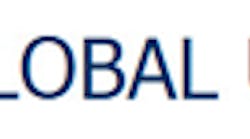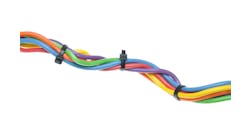It's good to get your ducks in a row, but, if you happen to be expanding ExxonMobil's Rotterdam Advanced Hydrocracker (RAHC), that's about a million ducks, so it might be good to get some help.
To streamline its project management and procurement process to help to mitigate risk and accelerate deployment on the $1.2-billion brownfield project, ExxonMobil is using an innovative main instrument vendor (MIV) approach. This program relies on Emerson Automation Solutions to go well beyond the typical supplier role and participate in a global framework agreement with standardized parts and models, pre-fixed pricing structures, coordinated specification and procurement and verified testing and commissioning. The MIV also works closely with Fluor, which is the project's engineering and procurement construction (EPC) company. It handles engineer documents, loop diagrams and other essential tasks.
The RAHC expansion is presently in the detail engineering stage, and it is expected to begin construction late in 2017. It will expand Rotterdam's hydrocracker to upgrade heavier byproducts to lighter, higher-value products, such as EHC Group II base stacks and ultra-low-sulfur diesel. This expansion builds on recent, similar projects at ExxonMobil's facilities in Baytown, Texas, and Singapore, which produce EHC Group II.
Amit Verma, instrument group lead, safety and automated systems, ExxonMobil Research & Engineering, and Steve Newton, global account manager, Rosemount,Emerson Automation Solutions, presented "Top 10 ways ExxonMobil mitigated project risks on Rotterdam hydrocracker project" at the Emerson Global Users Exchange in Austin, Texas.
Instrumentation project risks
Before developing its MIV program, ExxonMobil faced an array of issues and risks that threatened to complicate and delay its RAHC project. Verma reported these include accelerated project schedule, coordinating multiple instrument vendors, project management/vendor stewardship, resource limits, quality control, cost controls, process data quality, getting specification right the first time, managing change orders and construction and commissioning.
[sidebar id =1]"It can be a struggle to get the right people on projects, but we and the EPC were also facing accelerated and compressed schedules, interfacing with many vendors," said Verma. "There are just a lot of challenges on this project and additional risks caused by its accelerated schedule. These include added manpower needed for developing multiple specifications, increased engineering burden on the EPC and ExxonMobil, managing procurement and lead times and speeding up bid evaluations. However, the resources for coordinating and completing all these tasks are limited, and the risk is something may slip somewhere, increasing costs and delaying the schedule."
Traditionally, ExxonMobil and its EPC used multiple vendors, which multiplied their project management, project execution and procurement interfaces. This made them all more complex; increased administrative liability for procurement, expediters and engineers; led to ineffective order tracking; and required stewardship by multiple field contractors. "The more vendors we had, the thinner the resources we had to cover them, but we had to ensure adequate resources for us and the EPC without jeopardizing product quality and the schedule," explained Verma. "So, we developed a technical readiness process and a global framework agreement, which standardizes equipment parts and models on an approved manufacturer list (AML), and sets up a pre-agreed/fixed pricing structure. We're also striving to get more process performance data for devices right the first time to minimize change orders and costs."
Settling on one MIV
To simplify supplier support with one-stop shopping, reduce configuration and calibration errors and manage multiple remaining vendors, ExxonMobil also appointed Emerson as its MIV, lead project manager and single point of contact for the RAHC expansion project. Consequently, Newton reported that Emerson hired its own dedicated project manager for the Rotterdam project, added offices at ExxonMobil, embedded more staff with its client and made sure its valve selection tool matched ExxonMobil's tool. Besides project management, Emerson supplies not only its own products, but also brings in third-party devices in accordance with a predefined list from ExxonMobil.
"Being an MIV allows us to embed more experts with our EPC team and ExxonMobil, and so everyone was able to collaborate more quickly under one roof," said Newton.
"This enabled more efficient project stewardship, and let us cut six or seven months off our schedule by combining instrumentation requirements into one package and removing former requirements for competitive bidding, which translated to more dollar savings," added Verma. "This also allowed us to focus resources on technical selection, rather than bid evaluations, and reduce vendor interfaces, meetings and the EPC's administrative project management burden. This was much easier than all the phone calls and emails we had before.”
"Besides coordinating testing documentation and logistics, having an MIV enabled more focused review meetings on process data with Intergraph's SmartPlant Instrumentation (SPI) software for QA reviews," added Verma. "It also allows deep dives by the MIV into control valve data and review cycles. This let us make sure process data was right, so the correct valves were selected before PO placement, and allow standardization across all valve orders. We also achieved standardization and approval during front-end engineering design (FEED) and further minimized change orders.
"Using the MIV format really took our relationship with Emerson one step further, and bringing Emerson's project management expertise onboard further extended our efficiencies,” said Verma. “We'll refine this model as we go forward, but we're definitely going to do more of it in the future."






